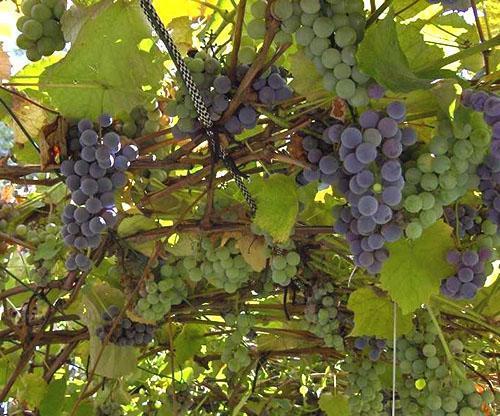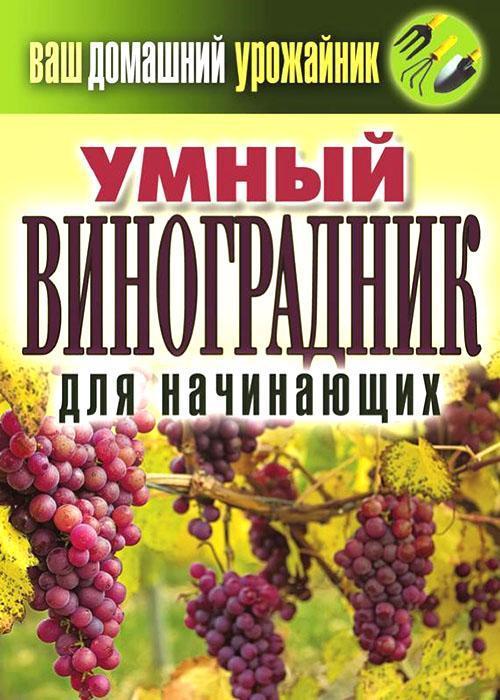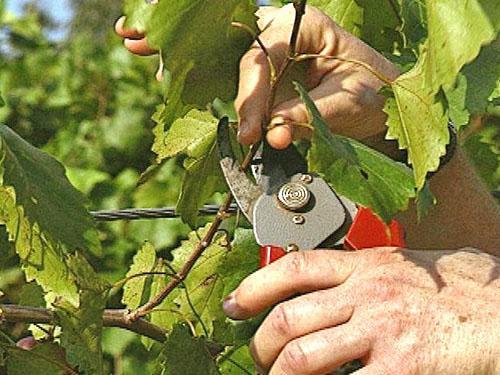Summer grape care in Siberia
 The climate of Siberia is characterized by sharp temperature changes not only during the year, but in spring and early summer between the nighttime and daytime heat distribution. The grapes do not like abrupt changes, so the domestication of the plant went on with varying success for forty years. Currently, a method has been obtained for introducing grapes into the gardens of Siberia. Taking care of grapes in summer in Siberia is different from cultivating it in the southern regions.
The climate of Siberia is characterized by sharp temperature changes not only during the year, but in spring and early summer between the nighttime and daytime heat distribution. The grapes do not like abrupt changes, so the domestication of the plant went on with varying success for forty years. Currently, a method has been obtained for introducing grapes into the gardens of Siberia. Taking care of grapes in summer in Siberia is different from cultivating it in the southern regions.
Features of agricultural technology of Siberian grapes

- breeding only early and zoned varieties;
- during the season, plants should be hardened;
- limit fertilization with nitrogen fertilization;
- grow one fruiting vine per bush;
- regulate the fruit load during budding and filling;
- during the summer, carry out work on the green bush systematically;
- pruning vines carry out only in the fall, twice;
- shelter, snow retention, spring opening of bushes - according to the peculiarities of climatic conditions.
All recommendations are based on the practical introduction of grapes in Siberia, first by the agronomist VK Nedin from the Altai village of Belokurikha, then by amateur gardeners in Biysk. Together, they developed an agricultural technique for growing grapes in Siberia, called SSV-1 and SSV-2. According to their recommendations, only new hybrid varieties should be used and the bushes should be hardened, minimizing maintenance activities and forcing the bush to fight for survival on its own. However, not all of their recommendations are applied by gardeners. With the participation of specialists, a slightly different scheme of agricultural technology has been developed, which does not exclude feeding and processing of plants.
 If the bush has overwintered and left the return frost, the vine has survived, you will need to find a middle ground between getting the harvest and putting the plant in the winter prepared, harden it. Therefore, during the summer, the bush is brought up.
If the bush has overwintered and left the return frost, the vine has survived, you will need to find a middle ground between getting the harvest and putting the plant in the winter prepared, harden it. Therefore, during the summer, the bush is brought up.
To do this, you should limit the application of nitrogen fertilizers. They cause the growth of green mass, and the task of the gardener is to limit the growth of the vine. Top dressing with mineral phosphorus and potash fertilizers for grapes are required. It is necessary to replenish the removal of nutrients. Therefore, twice a season during the filling of berries, foliar feeding with full complex fertilizer must be performed in a soluble form. Root dressing, by the way, is also made only in soluble forms. Spraying with a wood ash hood gives a good effect. The question of how to feed the grapes in July is decided in favor of the filling and taste of the fruit. The best fertilizer mixture is potassium monophosphate and wood ash.
 Top dressing without the use of nitrogen fertilizers allows the wood to mature earlier and gain the flavor of the berry. For the same purposes, the plant is formed into one vine, which allows all the forces of the plant to be used to form the crop. Grassing vines, chasing, pinching growth points are aimed at the successful ripening of fruits in a short period and obtaining a vine prepared for winter. The rationing of the crop serves this as well. Vineyard care videos will help you do the green leaf work correctly.
Top dressing without the use of nitrogen fertilizers allows the wood to mature earlier and gain the flavor of the berry. For the same purposes, the plant is formed into one vine, which allows all the forces of the plant to be used to form the crop. Grassing vines, chasing, pinching growth points are aimed at the successful ripening of fruits in a short period and obtaining a vine prepared for winter. The rationing of the crop serves this as well. Vineyard care videos will help you do the green leaf work correctly.
Embossing and pinching can be done only after the brush has formed, leaving 15 leaves behind for pouring. Grazing and removal of vine shoots is carried out systematically.
How often to water the grapes is a matter of how the crop is grown. If the bushes are planted separately, the irrigation holes have a depression. Bushes can grow in a trench in which a ditch runs. Watering plantations in ditches is carried out three times per season, starting after setting the berries and stopping after filling. When watering in a trench, water consumption is 50 liters per square of plantation. Other gardeners for bush cultivation recommend watering at the same time, but with a bucket of water per week. In both cases, the soil is mulched.
You can not water the grapes during pollination and after the berries are full.
 Siberian grapes are in more favorable conditions due to the fact that pests and diseases have not yet become companions of the vine here. But if preventive treatments are not carried out, diseases will come. Therefore, the treatment with sulfur preparations that suppress mildew and odium belongs to the complex of measures against fungal diseases. Sulfur treatment is carried out two months before brushing.
Siberian grapes are in more favorable conditions due to the fact that pests and diseases have not yet become companions of the vine here. But if preventive treatments are not carried out, diseases will come. Therefore, the treatment with sulfur preparations that suppress mildew and odium belongs to the complex of measures against fungal diseases. Sulfur treatment is carried out two months before brushing.
The gardener decides how to process the grapes in July according to the state of the bush. If yellow spots appear on the leaves with a gray coating on the back of the leaf, you can treat it with baking soda, potassium permanganate, since the berries cannot be saturated with a copper solution. But after harvesting, treat the vines and soil around the bush with copper-based fungicides.
 Against insects in early summer, the bushes should be treated with Aktellik, a systemic drug. This drug will be indispensable if, after low-quality planting material, the dangerous phylloxera grape aphid populates the region. This pest can settle both on the roots and in the aerial part, oppressing and weakening the plant. From other local leaf beetles, traditional biologicals and folk remedies will help. It will not do any harm, only the use of biological preparations Shining, EM-1 Baikal will help the plant. These drugs will protect the plant from diseases and pests. They can be used at any stage of the growing season, at an air temperature above 10 0.
Against insects in early summer, the bushes should be treated with Aktellik, a systemic drug. This drug will be indispensable if, after low-quality planting material, the dangerous phylloxera grape aphid populates the region. This pest can settle both on the roots and in the aerial part, oppressing and weakening the plant. From other local leaf beetles, traditional biologicals and folk remedies will help. It will not do any harm, only the use of biological preparations Shining, EM-1 Baikal will help the plant. These drugs will protect the plant from diseases and pests. They can be used at any stage of the growing season, at an air temperature above 10 0.
 In the northern regions of Siberia, where the summer is very short, the cultivation of one sleeve at human height, the annual renewal of one fruit link and the replacement knot is a way out. With this cultivation, all the power of the bush is directed to the formation of new shoots. Therefore, pinching in the summer becomes the only way to keep the formed vine and get an early harvest. Only the sleeve is insulated in winter, the vine is harvested in two steps in the fall.
In the northern regions of Siberia, where the summer is very short, the cultivation of one sleeve at human height, the annual renewal of one fruit link and the replacement knot is a way out. With this cultivation, all the power of the bush is directed to the formation of new shoots. Therefore, pinching in the summer becomes the only way to keep the formed vine and get an early harvest. Only the sleeve is insulated in winter, the vine is harvested in two steps in the fall.